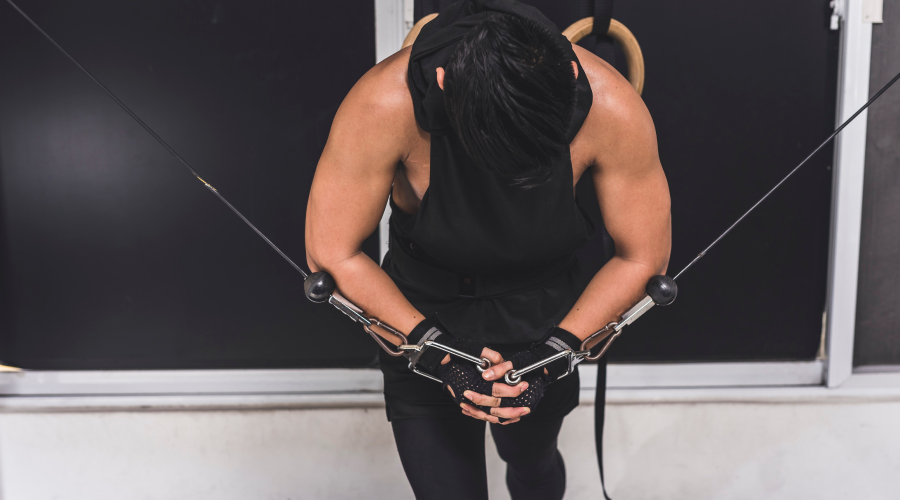

The realm of fitness encompasses a wide range of activities and equipment intended to build and tone the human body. One extremely useful and efficient tool for developing a well-rounded body is the cable crossover. In this blog, we will examine the cable crossover, its benefits, variations, and target muscle groups.
Cable Crossover Basics
A cable crossover resistance training exercise works many muscle groups simultaneously using cable devices. To offer a lot of movement, it often features two moving pulleys positioned on opposite sides of the machine. The exerciser engages a range of muscle fibres in the movement as they pull the wires together and cross them in front of the body.
Cable Crossover Benefits
Here’s a couple of benefits of cable crossover:
1. Isolation and Control
Cable crossovers make it easier to isolate particular muscle groups by providing fine control over resistance and range of motion. This degree of control is very helpful for people who want to define and shape their muscles precisely.
2. Constant Tension and Muscle Activation
Cable crossovers, in contrast to certain free-weight workouts, keep the muscles tense throughout the full range of action. Over time, this continuous tension can lead to increased hypertrophy by improving muscle activation.
Cable Crossover for Chest
Chest training is one of the main uses for the cable crossover. Users can target different areas of the chest by changing the height of the pulleys. By focusing on the mid-chest region during the workout, the cable crossover chest level helps produce a well-balanced and well-developed pectoral muscle.
Cable Crossover for Back
Although they are frequently used in chest exercises, cable crossovers can also be included in back exercises. The cable crossover is an effective exercise for strengthening the lats by utilising a reverse grip and adjusting the pulleys to shoulder height. This version gives the back muscles a different kind of stimulus, which helps develop a strong and defined upper back.
Cable Crossover for Lower Chest
Lower the pulleys to the machine’s bottom to focus on the lower chest. This adjustment increases the strain on the pectoral muscles’ lower region by altering the movement’s angle. Your exercise programme will seem more sculpted and contoured if it includes cable crossover lower chest.
Cable Crossover Exercise Variations
The cable crossover is adaptable to a variety of exercises. While bringing the cables together in front of the body is the traditional cable crossover technique, varying hand grips, body positions, and angles can add complexity and target particular muscle fibres. Experimenting with reverse and high-to-low cable crossovers will keep your workouts interesting and provide new challenges.
Muscles Worked During Cable Crossover
Since it’s a compound exercise, cable crossover involves multiple muscle groups at the same time. Some of the main cable crossover muscles worked are deltoids, pectoralis, and triceps. The stabiliser muscles present in the lower part of the body as well as core also get engaged in order to maintain balance during the workout.
Conclusion
The cable crossover is a popular, high-intensity workout that can be used to achieve a variety of fitness objectives. Whether your goal is to develop a strong chest, work on your lower chest, or strengthen your back, adding cable crossovers to your exercise regimen can provide impressive results.




